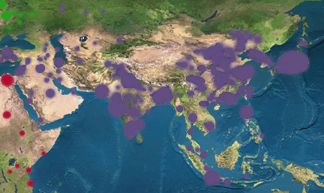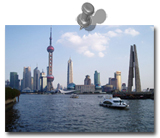2. Urbanisation
Asia

In the year 2000, Asia and Africa were the least urbanised continents. But as the largest population growth will occur in Africa and Asia and will be accompanied by a growing urban population with a declining percentage in the rural areas, this figure will change significantly. Almost 50% of the world´s population live in Asia, it also has the largest number of urban dwellers, about 46% of the world's urban population. In 1999, 36.2% of the Asian population was urbanised and the urban growth rate was 3.77%. Currently, Asia holds more than half of the world's cities with more than 10 million people. By 2030, Asia and Africa will both have higher numbers of urban dwellers than any other major area of the world (Dutt, Noble 2003, UN-HABITAT 2001).
Approximately one-quarter of the world´s population live in East Asia, the largest cluster of human inhabitants. China is the world´s most populous country. In less than one-third of a century, China has experienced what is almost certainly the largest scale of urbanisation, or hyper-urbanisation and the most rapid rural-to-urban transition in human history. Recently, three expansive megacity regions or Mega-Urban-Regions have developed, the Pearl River Delta, Shanghai and Beijing.
Southeast Asia includes Indonesia, the world´s fourth most populous country and the city-state of Singapore, the only country in the world that is 100% urban.
One-quarter of the people in Japan live in two large metropolitan areas, Tokyo and Osaka. Tokyo is by far the largest city on earth with about 33.4 million inhabitants and is also the fastest growing city of all (from 1900 to 2000: + 28 million, from 1950 to 2000: + 20.4 million) (Bronger 2004, De Blij, Murphy 2003, Renwick, Rubenstein 1995, Soja, Kanai 2007).
The 21st century will be the century of Asia.
Asia´s urban future is of great importance not only for the Asians, but for the world in general. The problems associated with urbanisation will be more severe in Asia than elsewhere because of the continuing rapid growth of its cities through massive increase in rural-urban migration (Dutt, Noble 2003).
Tasks: Why will the 21st century be the century of Asia and why will its urban future be relevant worldwide?
1. Discuss in your class or group the consequences of this development.
2. Have there already been some consequences of such rapid urbanisation?
Case study: Mumbai


